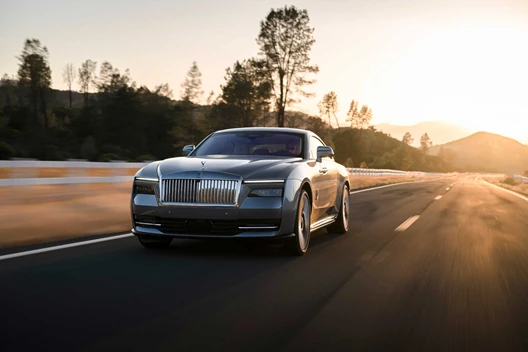Eco-Friendly Cars: How They’re Changing the Industry
The automotive industry is undergoing a profound transformation as eco-friendly cars take center stage. These vehicles, designed to minimize environmental impact, are redefining how we think about transportation. From reducing carbon footprints to advancing sustainable technologies, eco-friendly cars are not just a trend but a revolution. This blog delves into their evolution, current landscape, and future potential.
The Rise of Eco-Friendly Cars
The concept of eco-friendly cars isn’t new. Early efforts to create environmentally conscious vehicles began with the development of hybrid technologies in the late 20th century. However, it wasn’t until the 21st century that these innovations gained significant traction.
Key Milestones:
- 1997: The Toyota Prius became the world’s first mass-produced hybrid car, offering a blend of gasoline and electric power.
- 2010: Nissan’s Leaf marked the arrival of the first mass-market all-electric car, with zero emissions and a practical design.
- 2020s: A surge in electric vehicle (EV) production and advancements in hydrogen fuel cell technologies.

Types of Eco-Friendly Cars
Eco-friendly vehicles come in various forms, each addressing environmental challenges in unique ways.
1. Hybrid Vehicles (HEVs): Combine a traditional internal combustion engine with an electric motor to improve fuel efficiency and reduce emissions.
- Example Models: Toyota Prius, Honda Insight
- Key Benefits: Reduced fuel consumption and lower emissions compared to conventional vehicles.
2. Plug-in Hybrid Vehicles (PHEVs): Similar to hybrids but with a larger battery that can be charged via an external source.
- Example Models: Mitsubishi Outlander PHEV, Ford Escape PHEV
- Key Benefits: Extended electric-only range and reduced reliance on gasoline.
3. Battery Electric Vehicles (BEVs): Operate solely on electric power, producing zero emissions during operation.
- Example Models: Tesla Model 3, Chevrolet Bolt
- Key Benefits: No tailpipe emissions and lower operating costs.
4. Hydrogen Fuel Cell Vehicles (FCEVs): Generate electricity by combining hydrogen with oxygen in a fuel cell.
- Example Models: Toyota Mirai, Hyundai Nexo
- Key Benefits: Zero emissions with water vapor as the only byproduct.

Eco-Friendly Cars Today
In 2024, eco-friendly cars have become mainstream, with numerous options for consumers. Governments, manufacturers, and environmental organizations are working together to promote their adoption.
Market Highlights:
- Increased Sales: EVs accounted for over 15% of global car sales in 2023, a significant increase from previous years.
- Diverse Offerings: Eco-friendly cars now span all categories, from compact cars to luxury SUVs and trucks.
- Corporate Commitments: Major automakers like GM, Volkswagen, and Toyota have pledged to go carbon-neutral by 2050.
Challenges Remaining:
- Infrastructure: Expanding charging stations and hydrogen refueling networks.
- Affordability: High upfront costs, though subsidies and incentives help mitigate this.
- Battery Sustainability: Addressing the environmental impact of mining and recycling materials like lithium and cobalt.

The Environmental Impact
Eco-friendly cars are instrumental in combating climate change by reducing greenhouse gas emissions.
Impact Metrics:
- A single EV can reduce CO2 emissions by up to 4.6 metric tons annually compared to a gasoline-powered car.
- Adoption of eco-friendly cars could cut global oil demand by 25% by 2040.
Beyond Emissions:
- Noise Pollution: Electric vehicles operate silently, contributing to quieter urban environments.
- Air Quality: Reduced tailpipe emissions improve air quality, particularly in densely populated cities.

The Future of Eco-Friendly Cars
The journey toward sustainable transportation is just beginning. Here’s what the future holds:
- Solid-State Batteries: Promising higher energy density and faster charging times, these batteries are expected to revolutionize the EV market by the late 2020s.
- Autonomous Eco-Friendly Vehicles: Combining self-driving technology with electric power will redefine personal and public transportation.
- Green Manufacturing: Automakers are adopting sustainable practices, including renewable energy-powered factories and recyclable materials.
- Hydrogen Expansion: With advances in hydrogen storage and fuel cell efficiency, FCEVs could become a viable alternative to traditional EVs for long-distance travel.
- Global Policies: Countries like Norway aim to phase out internal combustion engines entirely by 2025, setting an ambitious benchmark for others.
Conclusion
Eco-friendly cars are more than just vehicles; they’re a symbol of progress toward a sustainable future. By embracing innovation and addressing environmental challenges, they have the potential to transform the automotive industry and the planet. As consumers, governments, and manufacturers unite to support this shift, the road ahead is paved with promise.
Are you ready to join the eco-friendly car revolution? Share your thoughts and experiences in the comments below or explore the latest green vehicle options in your area.

Auto Blue Albania
AdministratorWelcome to Auto Blue Albania, your trusted destination for high-quality second-hand vehicles. Located in the heart of Albania, we specialize in connecting car enthusiasts and everyday drivers with reliable, well-maintained, and competitively priced used cars. With years of experience in the automotive industry, we understand the importance of finding a car that suits your lifestyle and budget.










